
Explore in Virtual 3D
For an immersive experience, take the 3D Tour, or learn more about the Cathedral’s history below.
Chapels
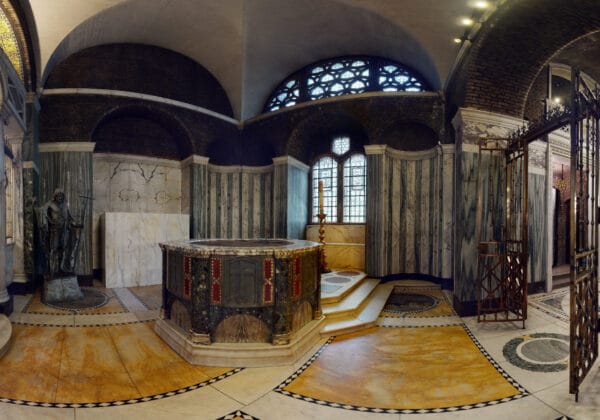
The Baptistery
The chapels of Westminster Cathedral depict the journey from life to death, and The Baptistery represents the beginning: birth. It is yet to be finished, but still adorned with marble and features a large octagonal font.
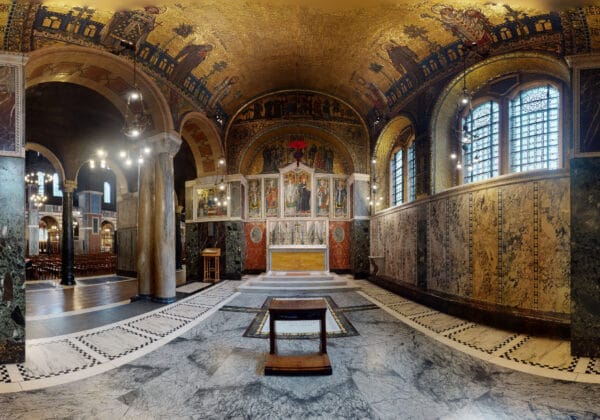
The Chapel of St Gregory and St Augustine
This chapel is dedicated to the two great apostles who brought Christianity to England – St Gregory and St Augustine. It is the first chapel in the Cathedral and is located next to the Baptistry.
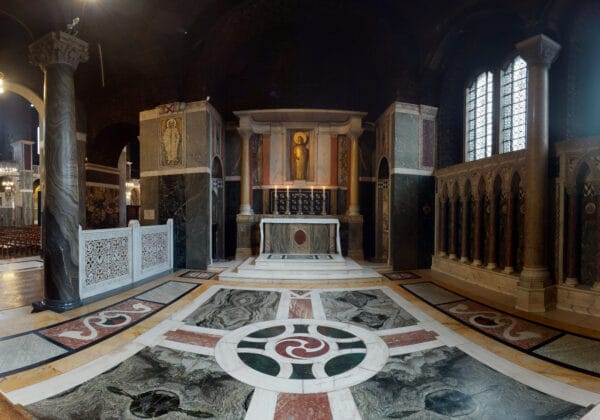
The Chapel of St Patrick and the Saints of Ireland
Sheathed in green marble from Irish quarries, the great saint of Ireland is glorified here along with the Irish regiments who served in the British Army in World War One.
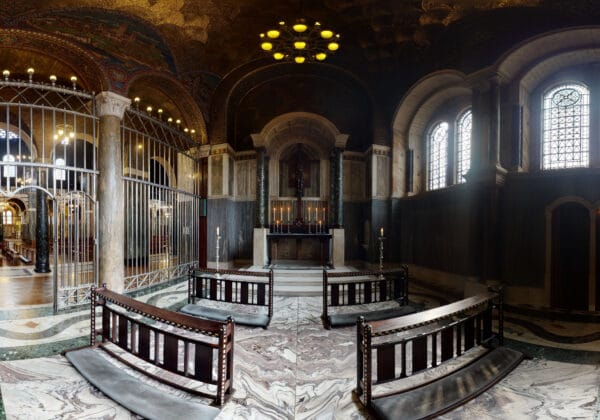
Chapel of St Andrew and the Scottish Saints
St Andrew is the patron saint of Scotland and one of Christ’s twelve disciples. This chapel is regarded as one of the finest in the Cathedral with its comprehensive design and decorative scheme that includes references to St Andrew’s occupation as a fisherman and highlights Scottish influences.
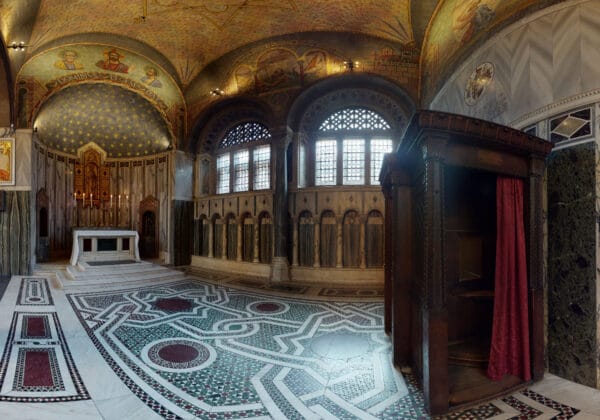
The Chapel of St Paul
The story of St Paul’s conversion is one of the most dramatic in the bible. His influence on the Church is recognised in the important feast of SS Peter and Paul. This chapel tells the story of his life with details including the sword of his martyrdom.
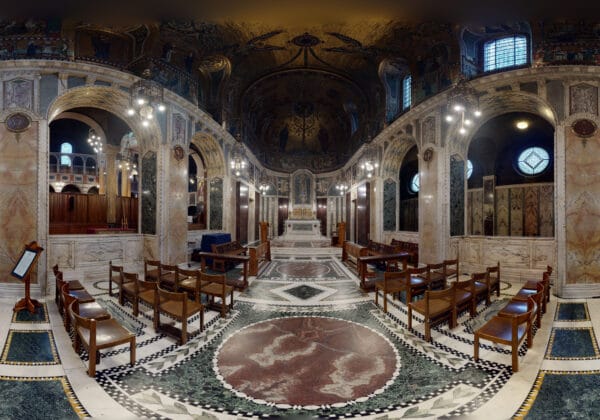
Mary’s Domain: South Transept to Lady Chapel
Mary’s Domain dominates the south-eastern corner of the Cathedral, a reflection of Catholic devotion and love for the Mother of God. The chapel is especially beautiful.
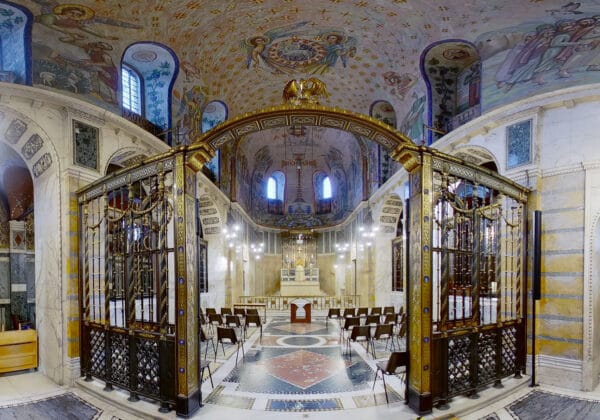
The Blessed Sacrament Chapel
A tour de force in its own right, The Blessed Sacrament Chapel was created by renowned Russian artist Boris Anrep and is one of the most memorable spectacles in Westminster Cathedral.
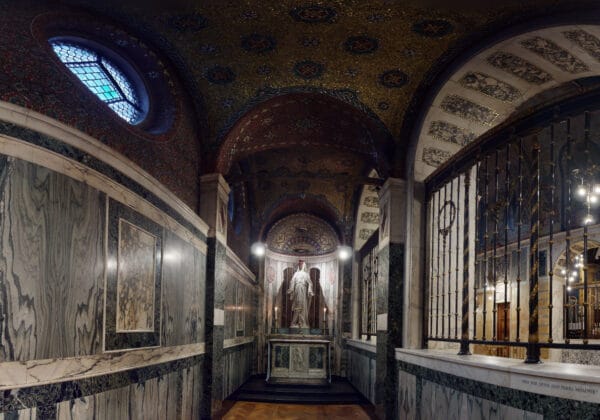
The Shrine of the Sacred Heart and St Michael
The shrine of the Sacred Heart is adjacent to the Blessed Sacrament Chapel. Its dedication recalls the Sacred Heart of Jesus, a central tenet of Catholic theology. St Michael is the archangel and defender of the faith.
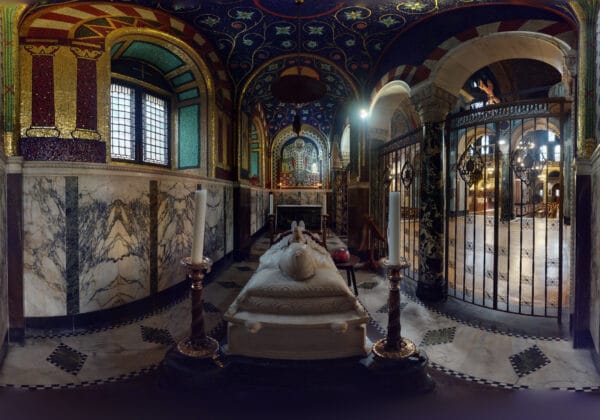
The Vaughan Chantry: The Chapel of St Thomas Becket
Small yet glittering, this jewel of a chapel is dedicated to St Thomas Becket of whom Henry II famously declared, ‘Who will rid me of this turbulent priest?’
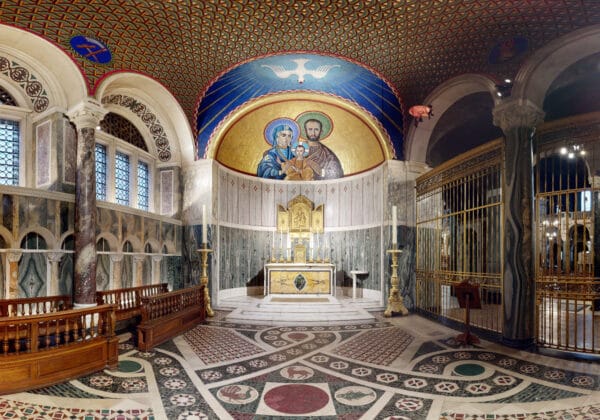
The Chapel of St Joseph and the Holy Family
The chapel of St Joseph and the Holy Family is a bright and beautiful space on the north side of the Cathedral. Here we celebrate the love of the Holy Family. The chapel is especially popular during Advent when we recall Mary and Joseph’s journey to Bethlehem.
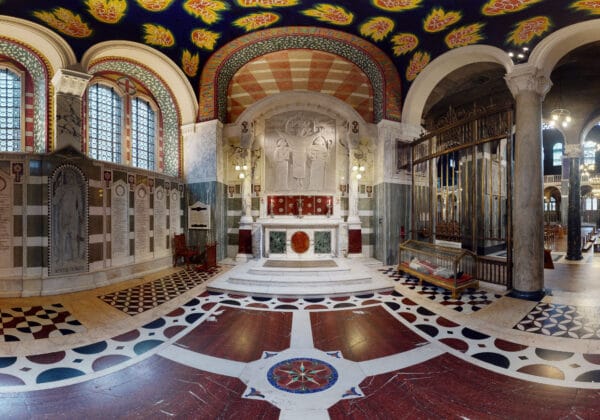
The Chapel of St George and the English Martyrs
This chapel is dedicated to St George, patron saint of England, and to the Catholic martyrs of England and Wales who died in defence of the faith. The chapel houses the commemoration to those who died in the First World War.
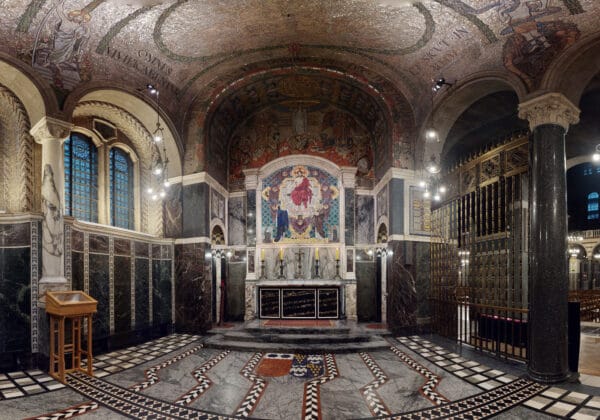
The Holy Souls Chapel
The Holy Souls Chapel is a very special place of reflection and prayer as we recall all those who have died and gone to God – the Holy Souls. This chapel is especially important in the month of November when we celebrate the Feasts of All Saints and All Souls.
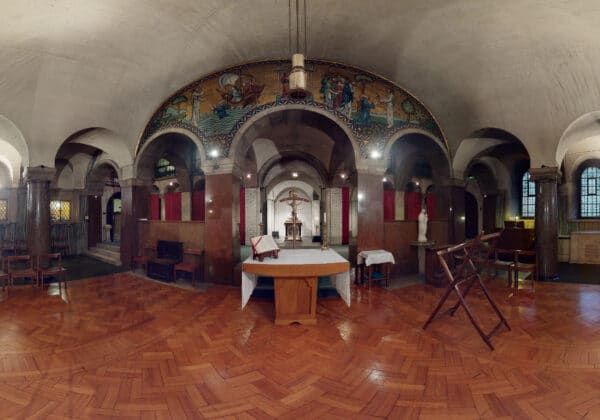
The Crypt Chapel of St Peter
Featuring six monolithic columns of granite and a mosaic of St Peter holding the keys to heaven, the crypt Chapel of St Peter is usually closed to the public and only accessible during a private tour.
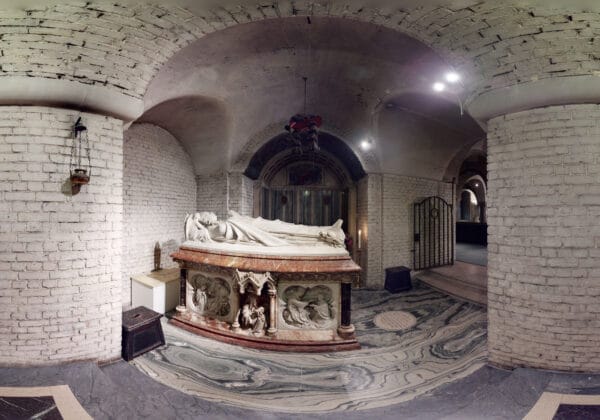
The Crypt Mortuary Chapel
The Crypt Mortuary Chapel is the resting place of Cardinals Wiseman and Manning – the first two archbishops of Westminster. The 3D tour gives unique access to this little chapel which is gated and not open for public view.
Main Areas of the Cathedral
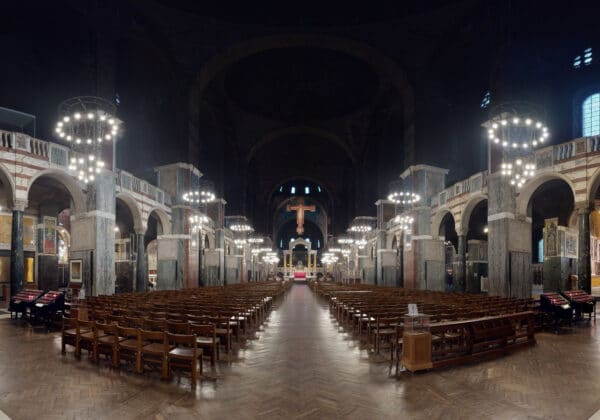
Westminster Cathedral
Westminster Cathedral is a living space of worship and community. The Mother church for Catholics in England and Wales, it has been at the heart of Catholic life for over 100 years. The Cathedral is free to enter and welcomes people of all faith and none. Experience the beauty and majesty of this unique church.
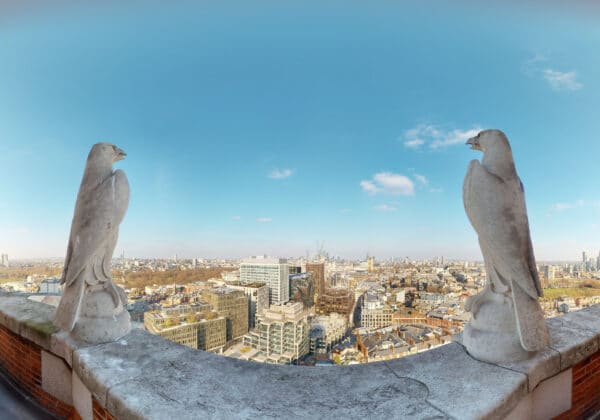
The Campanile
A favourite among visitors, The Campanile or Bell Tower is nearly the height of Big Ben and affords exceptional views of the London skyline.
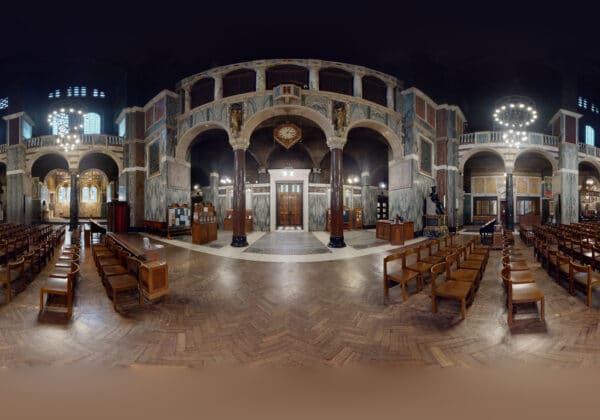
The Narthex
The entrance into the Nave features marble stonework that includes door frames of green Carystian marble and walls panelled in Violet Breccia.
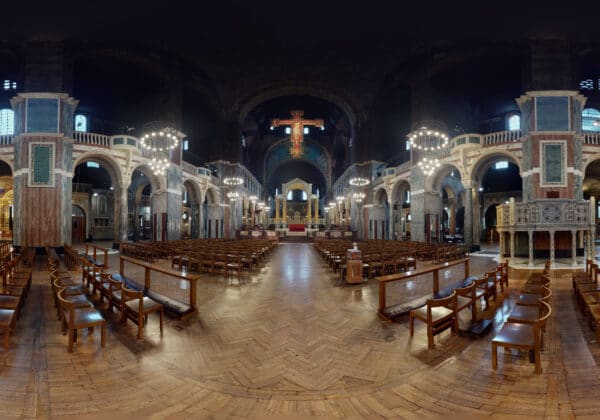
The Nave
The nave is the main body of the church. It is punctuated by magnificent marble piers on either side that draw the eye towards the High Altar and the Sanctuary of the Cathedral.
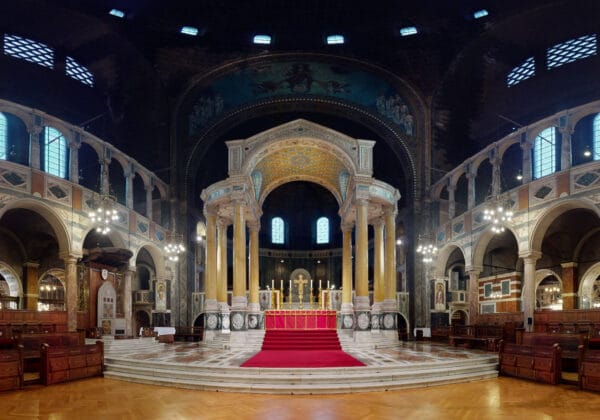
The Sanctuary
John Francis Bentley’s brilliant design for the Cathedral was focused on the sanctuary, the place where Mass is celebrated and where the bread and wine are consecrated to become the body and blood of Christ. The dramatic baldacchino frames the space within the dark interior.
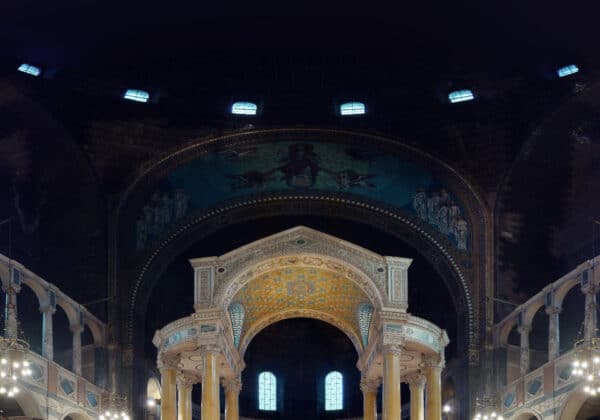
The Sanctuary Mosaics
Christ in majesty dominates the area above the sanctuary. Mosaic panels on the sanctuary walls have been chosen for their special significance to the wider Church and the charism of priesthood.
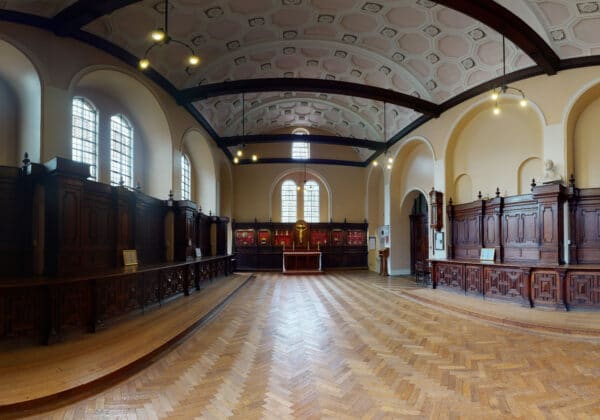
The Sacristry
The Sacristry is where priests prepare for Mass. This room is not open to the public and houses some of the great treasures of the Cathedral.
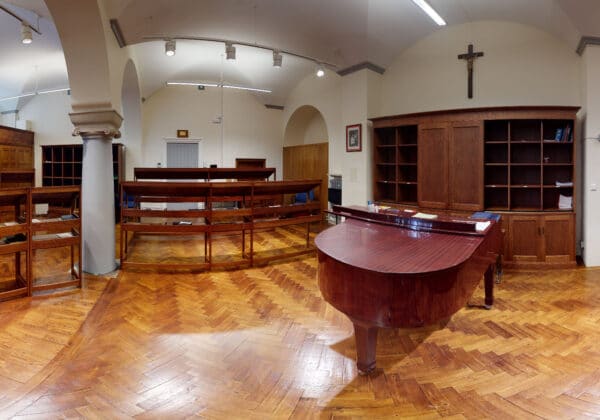
The Song School
Westminster Cathedral is known across the world for its choral music, and the Song School is where the choristers rehearse under instruction from the Master of Music.


